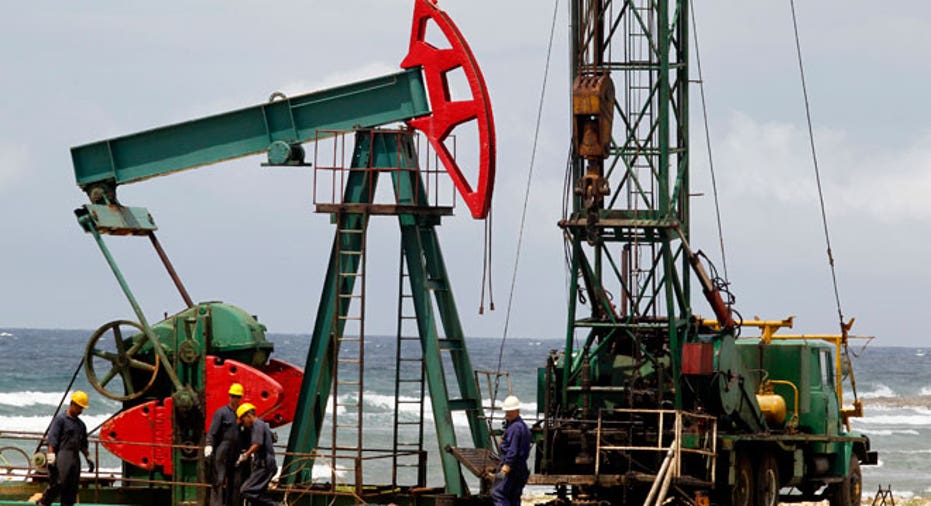Oil Slides Below $30 on Oversupply, Weak China Data

Crude futures dropped below $30 a barrel on Tuesday, extending the previous day's losses by more than 3 percent, as persistent worries about oversupply and more signs of a Chinese economic slowdown spooked the market.
Data showed China's annual rail freight volume, a key economic indicator, fell 11.9 percent in 2015, versus a drop of 3.9 percent in 2014, adding to concerns of contracting economic activity and weighing on oil prices.
Brent crude fell $1.13 to $29.37 a barrel by 0824 GMT, after hitting a session low at $29.27 a barrel, after settling down $1.68 in the previous session.
U.S. crude fell $1.03 to $29.31 a barrel, after hitting a low of $29.25. It fell $1.85 a day earlier.
"Technical short-covering and a cold spell in the United States and some parts of the northern hemisphere had helped prices rally temporarily, most of which was wiped out if you look at yesterday's prices," said Kang Yoo-jin, a commodities analyst at NH Investment and Securities based in Seoul.
"Psychological factors have driven the severe volatility in the market," added Kang, who said the situation was likely to persist until concerns over oversupply were lifted.
The Organization of the Petroleum Exporting Countries (OPEC) cannot cut its oil output when producers from outside the group are raising their supplies, Kuwait's OPEC governor said on Tuesday, adding that both sides should work together to stabilize the oil market.
OPEC-member Iraq may further raise output this year to as high as 4 million barrels per day (bpd) from the country's south, a senior Iraqi oil official said. Currently production is around 3.7-3.8 million bpd.
At the same time, Saudi Arabia, the world's top oil exporter, is determined to protect or expand its market share. Saudi Aramco's chairman said the firm was continuing to invest in oil and gas production capacity.
All the new production may mean low oil prices could stay for a longer time, Kuwait Petroleum Corp Chief Executive Officer Nizar al-Adsani said on Tuesday.
Investors are now closely watching the U.S. Federal Reserve policy meeting starting later in the day, the first since the central bank raised interest rates in December, for clues on the movement of the dollar.
The Fed is expected to take notice of the macroeconomic headwinds and go easy on hiking U.S. interest rates further, dragging on the dollar and supporting demand for commodities priced in the greenback.
"The weakening of the global economy is weighing down not only on the U.S. Federal Reserve, but also the ECB who are planning to act in March. This also means that the USD may not maintain strong after the meeting, which may give some support for oil prices," Daniel Ang at Phillip Futures said.
In the United States, commercial crude and gasoline inventories probably rose last week, while distillate stocks likely fell, a preliminary Reuters survey showed.
(Reporting by Meeyoung Cho; Editing by Christian Schmollinger and Himani Sarkar)



















